What happens when the Indian artisan, known best for their impeccable craftsmanship, holds the sartorial reigns of a collection? It gives us unprecedented Indian fashion and a standing ovation from an audience who couldn’t get enough.
Five artisan designers stole the show during Lakmé Fashion Week 2025, revolutionizing Indian fashion with their ensembles that prioritised craftsmanship. The distinction between tradition and modern design was dissolved with each stitch, dye, and weave, demonstrating that heritage should not only be preserved but also enhanced.
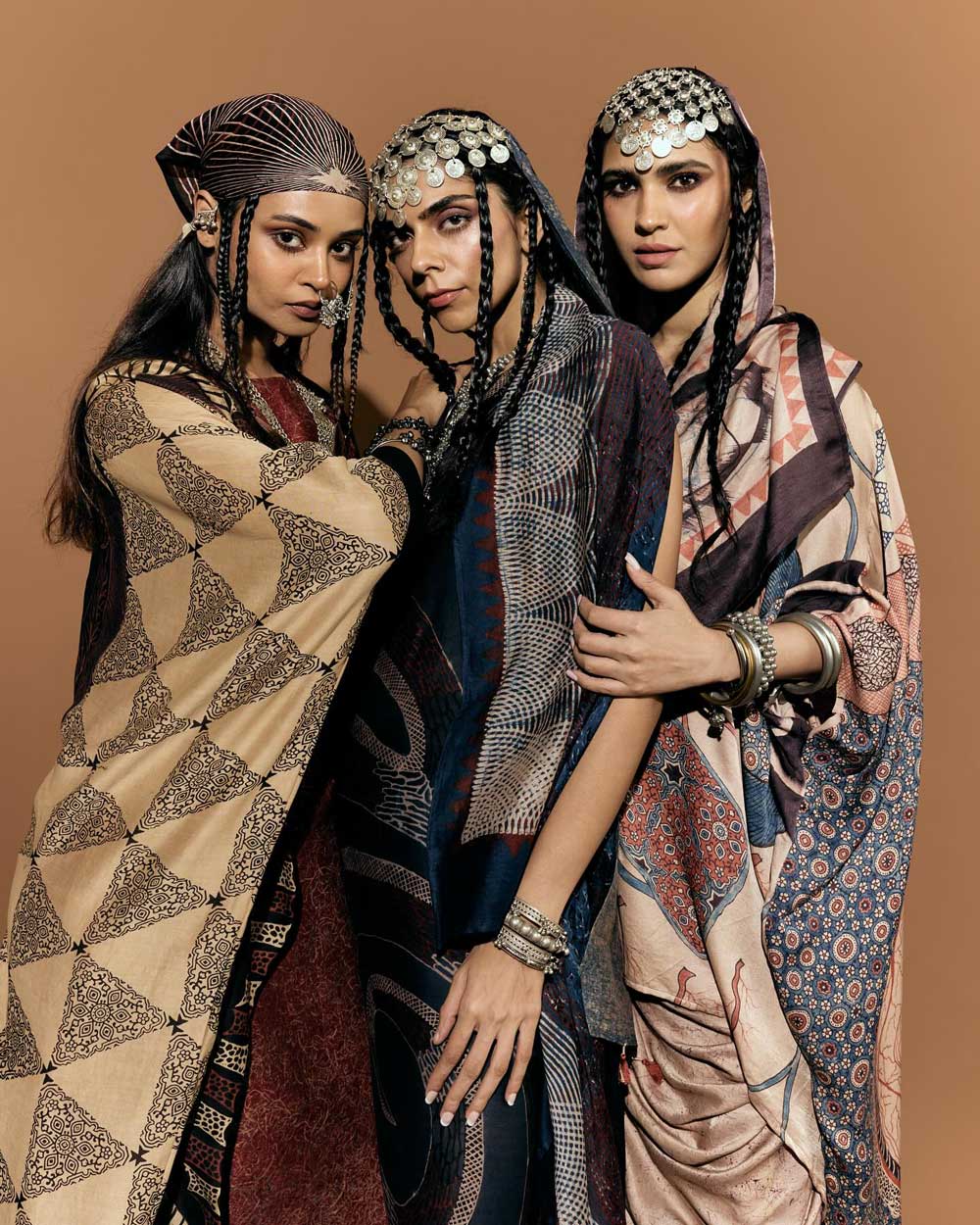
Image Source: Instagram/lakmefashionwk
Who is an Artisan Designer?
Indian fashion has long honoured its rich textile history, but artisan designers—craftspeople who both make and design—are set to become the industry's game-changers. These craftspeople work directly with their inherited techniques, adding new views, in contrast to mainstream designers who often interpret craft.
This transition has been fostered in large part by institutions such as Somaiya Kala Vidya (SKV). SKV equips craftspeople with modern skills, business acumen, and a number of design education programs. This model is upgrading Indian fashion, as evidenced by their latest exhibition at Lakmé Fashion Week 2025 in collaboration with FDCI.
Meet the Artisan Designers
At this year's fashion week, five artisan designers from Kutch brought their innovative collections to life, proving that slow fashion is not just sustainable but deeply aspirational. Their collections, far from the influences of the international runway or popular trends, seemed more inspired by concepts rooted in nature or craft. This, perhaps, was what made the designs stand out, making each craft feel fresh.
1. Zaid Khatri- Eternal Ajrakh
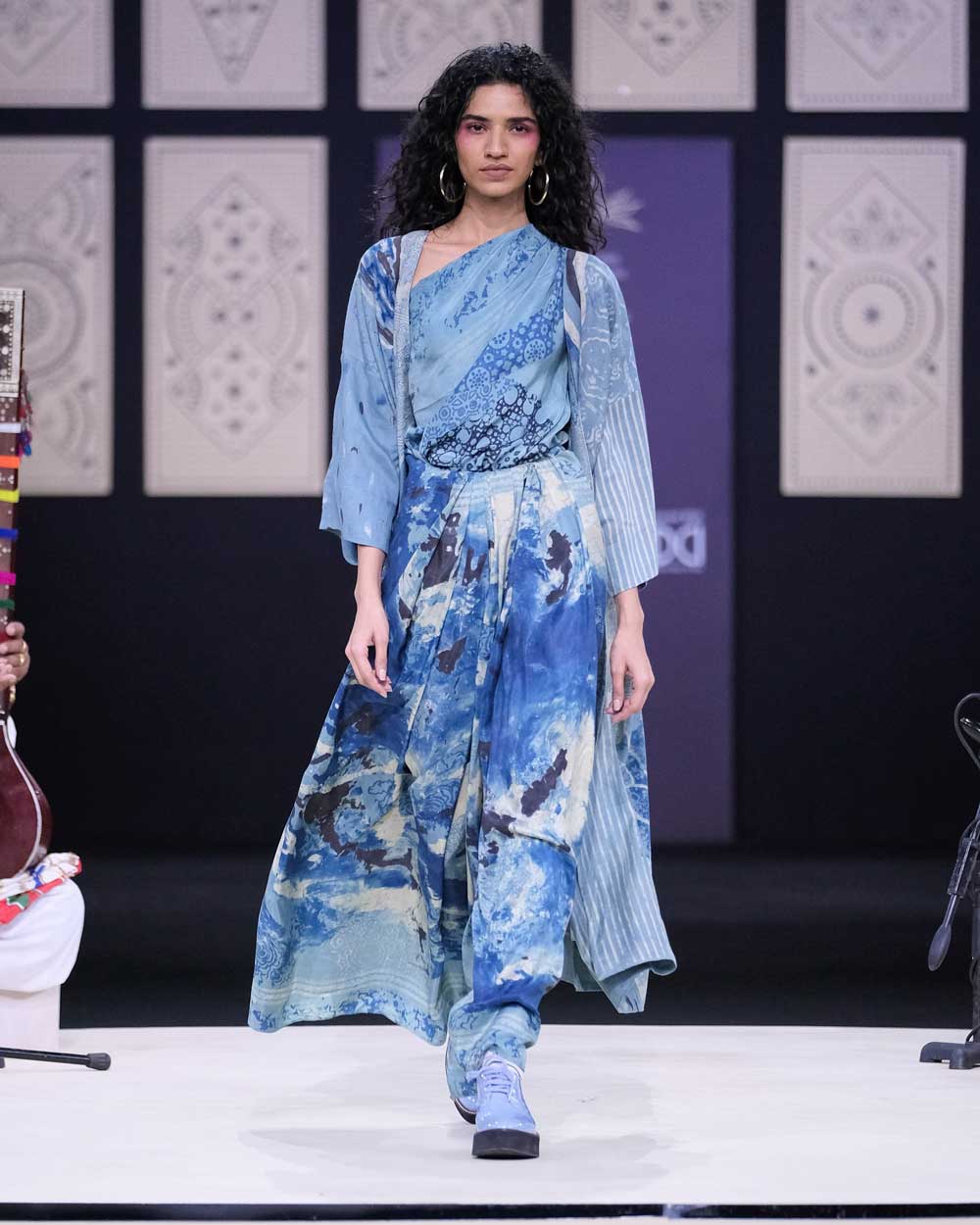
Image Source: Instagram/lakmefashionwk
Zaid Khatri's label, Ajrakh Gharana, recreated the age-old craft of Ajrakh block printing. His designs demonstrated how heritage techniques may be adapted to current silhouettes without losing their essence by fusing traditional motifs with modern draping and structure.
What set him apart: An inventive approach that made the craft relevant for today's audience was matched with a profound reverence for Ajrakh's legacy.
2. Amruta Vankar – Alaicha
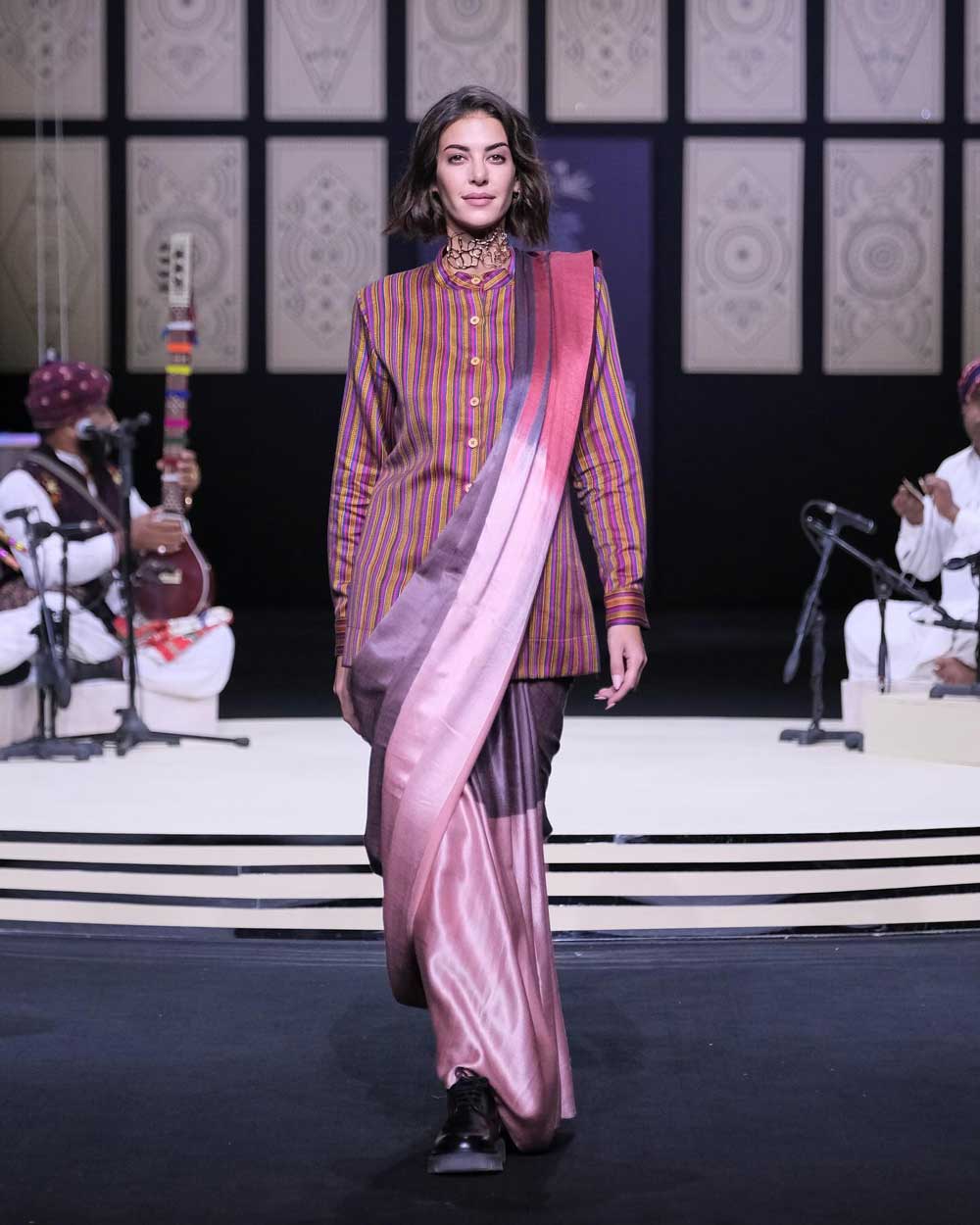
Amruta Vankar's label Alaicha, which specialises in Mashru weaving, honoured this opulent fabric with a simple yet striking design. In order to maintain Mashru's status as a modern essential, the collection experimented with colour blocking, structural forms, and subtle elegance. Vankar is one of the very few women artisans working to keep the craft of Mashru alive.
What sets her apart: She demonstrated that traditional weaves may be effortlessly stylish by fusing tradition and modernity in a seamless manner.
3. Mubbasirah Khatri – Anatomy
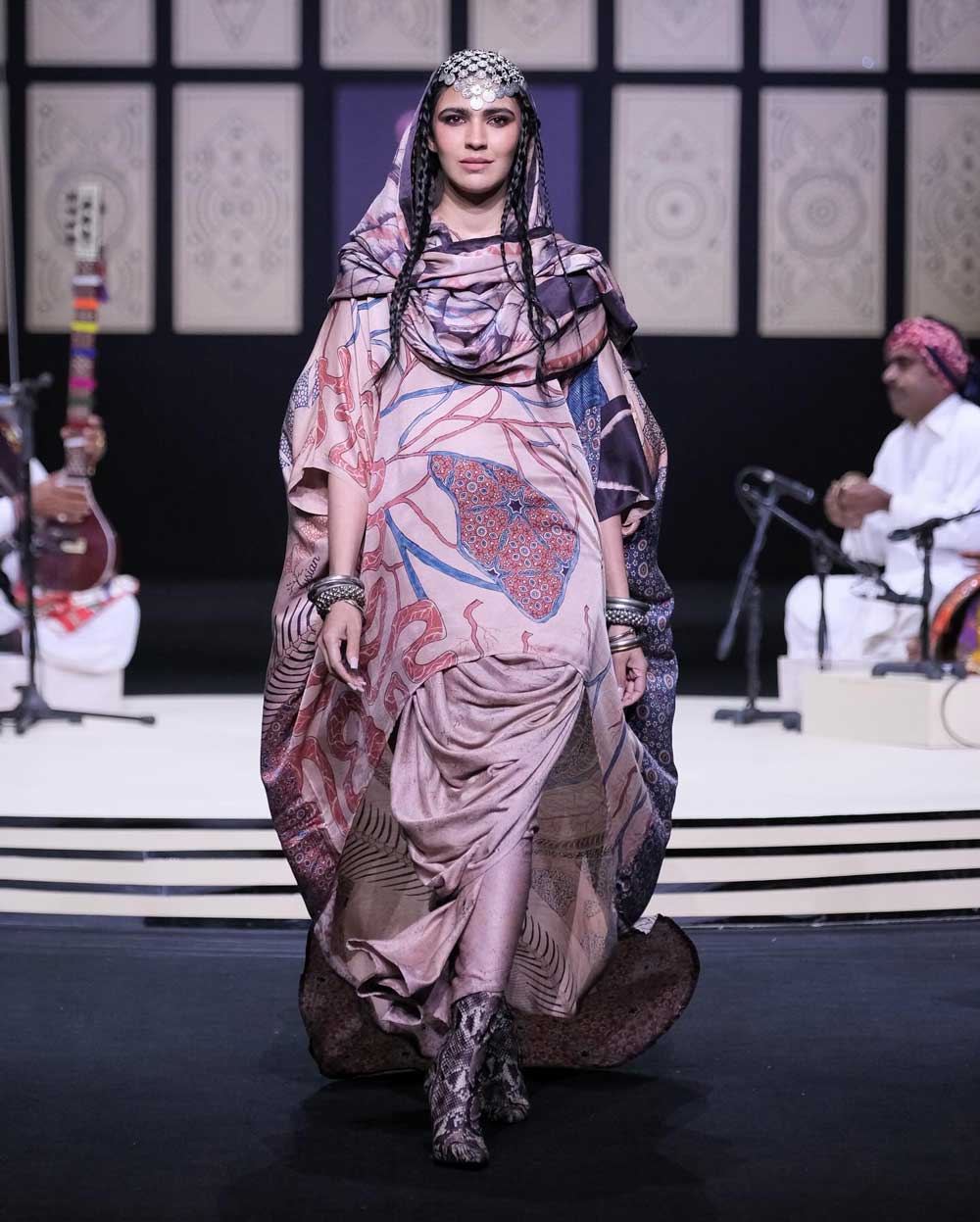
Image Source: Instagram/lakmefashionwk
Kutch's sole female Ajrakh artisan designer, Mubbasirah Khatri, introduced Elysian to her collection, ‘Anatomy.’ She created clothing that honoured both science and craft by utilising earthy hues and abstract patterns inspired by human physiology.
What sets her apart: A really thoughtful approach to design that demonstrates the conceptual and artistic possibilities of workmanship.
4. Muskan Khatri – Mystery
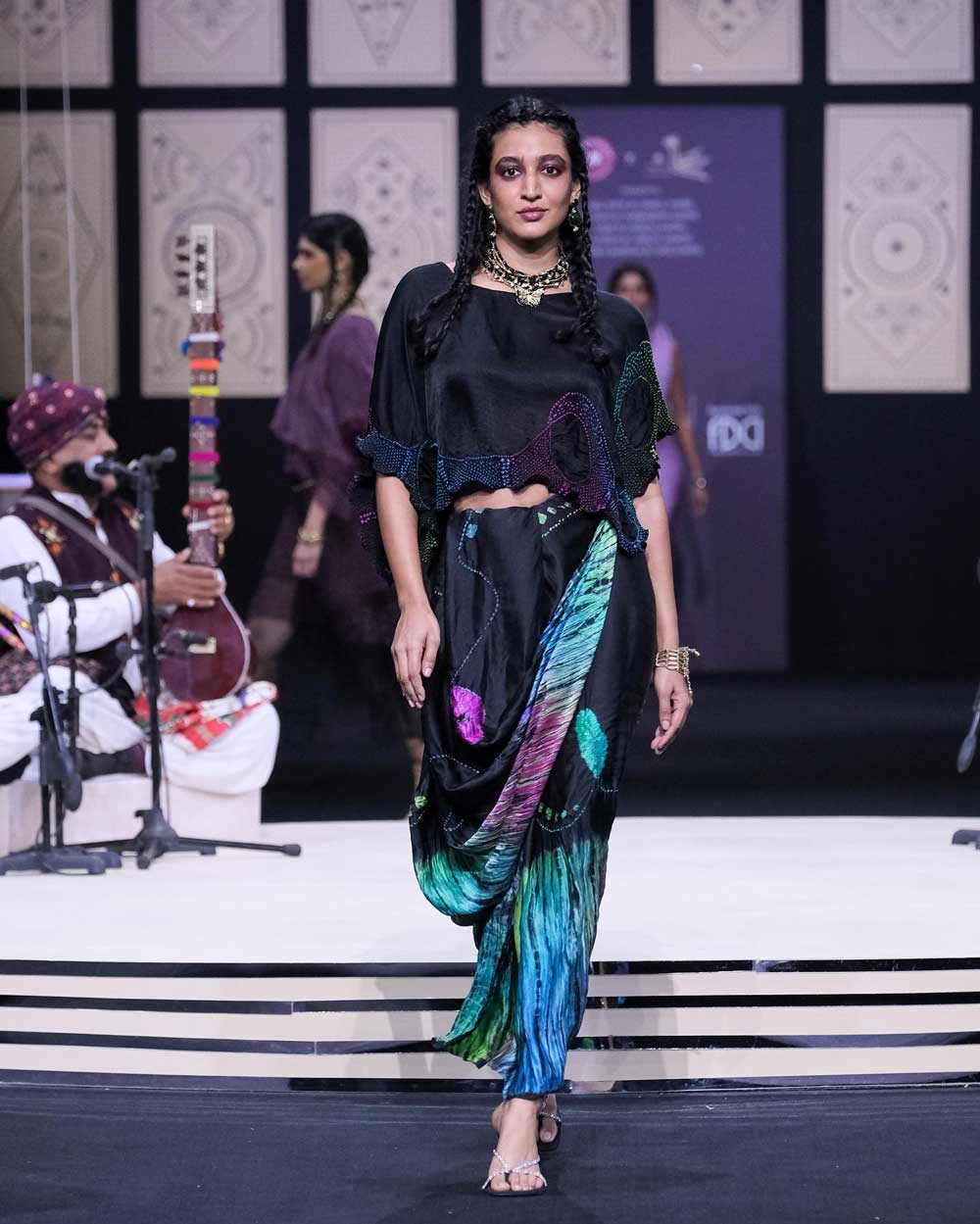
Image Source: Instagram/lakmefashionwk
Muskan Khatri turned Bandhani into a celestial story with her label Musk. Her collection, ‘Mystery,’ gave the traditional tie-dye method a futuristic twist by reflecting the cosmos with black, wine, and neon colours.
What sets her apart: A one-of-a-kind, space-inspired take on Bandhani that pushes the limits of what this age-old technique can achieve.
5. Shakil Ahmed – Tradition to Modern
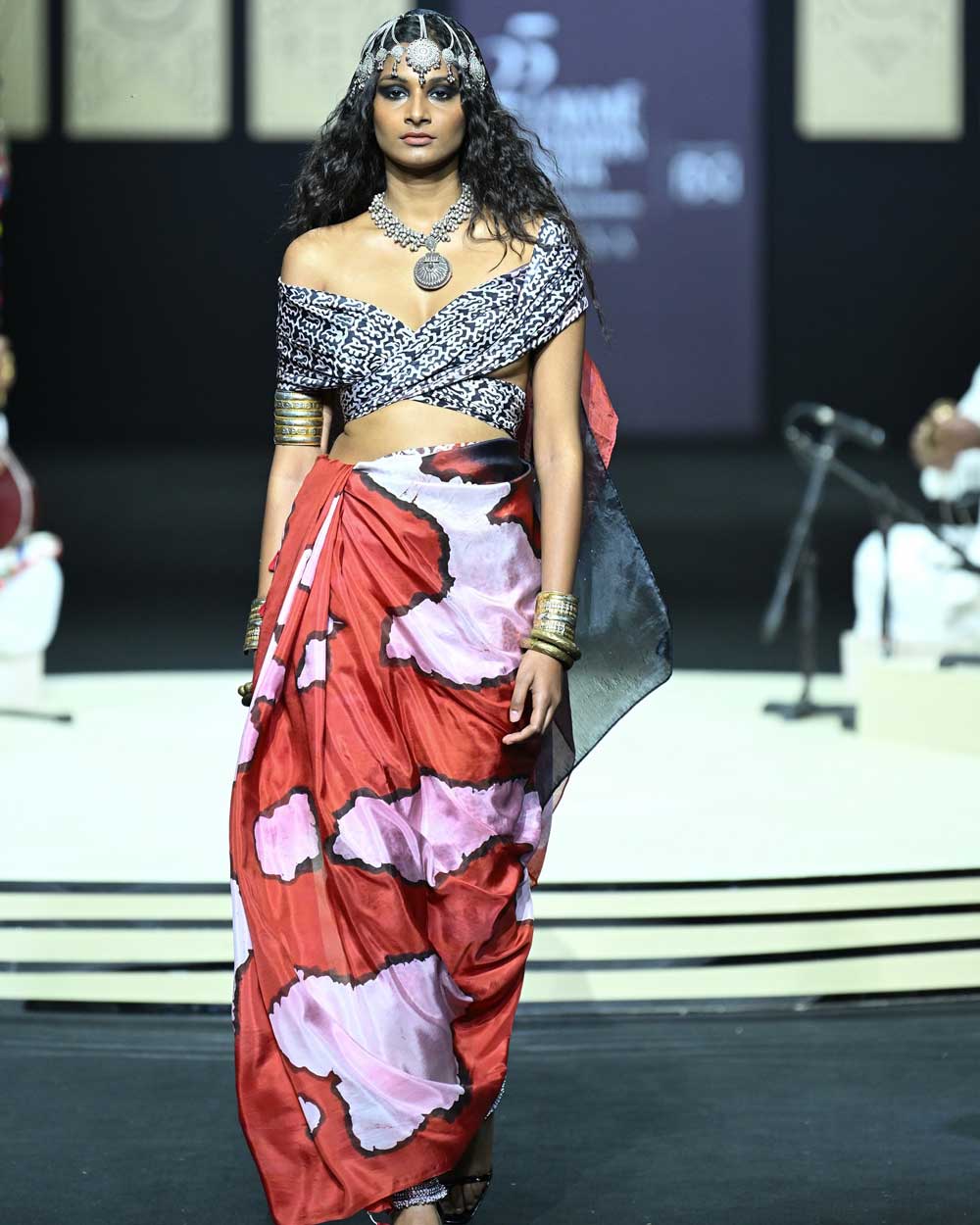
Image Source: Instagram/lakmefashionwk
Shakil Ahmed, a sixth-generation batik artist, used a modern twist on this resist-dying method with his label Neel Batik. He skillfully combined tradition with contemporary sensibilities through the use of structured saris, Indo-fusion forms, and a variety of fabrics.
What sets him apart: His bold approach to adapting Batik for the global market while maintaining its traditional roots is what made him stand out.
The Bigger Picture
A more significant change in Indian fashion is indicated by the success of these artisan designers. The popularity of slow, handcrafted clothes is only increasing as consumers' awareness of authenticity and sustainability grows. Fashion weeks and brands are realising the need to showcase craftspeople as independent designers as well as partners.
The goal of the artisan-led design movement is to create a new kind of luxury, not just a resurgence of craft. Mass-produced luxury clothes are now in competition with handmade, limited-edition pieces that are innovative and have cultural depth. India's global fashion identity might be redefined by this change, which would establish the country as a centre for high-end, meaningful fashion rather than merely producing fast textiles.